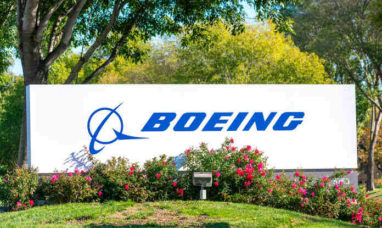Procter & Gamble Co (NYSE:PG)
The stock of Procter & Gamble fell on Thursday following a downgrade from Truist, which warned that consumers who are strapped for cash may trade down for items that are more affordably priced.
Procter & Gamble, commonly known as P&G, is a multinational consumer goods company headquartered in Cincinnati, Ohio. Founded in 1837, the company has a rich history and has established itself as a leader in the industry. P&G offers a wide range of products, including household and personal care items, such as detergents, soaps, shampoos, diapers, and more. The company has built a strong reputation for its brand portfolio, which includes well-known names like Tide, Pampers, Gillette, and Pantene.
Financial Performance
Procter & Gamble has consistently demonstrated robust financial performance over the years. The company has achieved steady revenue growth, driven by its strong brands and global presence. Additionally, P&G has a history of delivering solid profits and generating substantial cash flows. Its financial stability and ability to generate consistent returns have positioned it as a reliable investment choice for many.
Competitive Landscape
Procter & Gamble operates in a highly competitive industry, facing competition from both established players and emerging companies. The consumer goods sector is characterized by rapidly changing consumer preferences, evolving market dynamics, and the constant need for innovation. P&G’s ability to stay ahead of its competitors and adapt to changing market trends has been a key factor in its success.
Analyst Bill Chappell from Truist Securities believes that Procter & Gamble (NYSE:PG) is “still a great company, just not a great stock in [the] near term.” In a research note that he published on Thursday, he changed his recommendation for the stock from Buy to Hold and decreased his price target for the next 12 months from $165 to $155.
The price of a share of P&G fell by 1.7% to $152.57 on the most recent trading day, Thursday. The price of the stock has increased by 0.6% so far this year, lagging behind the S&P 500’s rise of 9%.
According to what Chappell writes, the fact that P&G’s organic volumes have been falling on an annual basis for the past four quarters is indicative of a weakening demand over the long term.
“Either consumers are discovering new ways to use less of a product or they are trading down to products that are lower in price. According to Chappell, “We are concerned that this trend will only continue for the next few quarters as even consumers with higher incomes are becoming wary of the consistently higher price points.” It will become increasingly difficult to trade those consumers back up to premium products or categories as their behavior changes (trades down, uses less).
P&G did not respond right away to a request for comment that was sent their way.
The downgrade from Chappell comes about a month and a half after P&G reported earnings and revenue for its fiscal third quarter that surpassed expectations from Wall Street and boosted its outlook for full-year sales. The company stated that the increase in revenue was due to the implementation of price increases. However, according to the Chief Financial Officer of the company, management is “cautiously optimistic,” but it does not anticipate the future to be completely problem-free.
During the most recent earnings call for the company, Chief Financial Officer Andre Schulten stated, “We continue to expect more volatility in the macro and consumer environment.” He also stated that the company anticipates sustained pressure in regard to costs and foreign exchange as the company moves forward.
When compared to other consumer-facing companies, Procter & Gamble (P&G) isn’t the only one to express demand-related concerns as inflation rates remain at historically high levels and fears of a recession persist. Target (TGT) issued a warning about slower sales trends just recently. The preliminary index of consumer sentiment for May registered its lowest reading since November 2022, according to a report published by the University of Michigan the previous week.
However, Chappell’s downgrade is about more than just the state of the American consumer; it also has to do with valuation. P&G stock is currently trading at a price that corresponds to forward earnings multiple of 24.6, which is higher than its long-term average.
Chappell stated that “We believe the company has done an extraordinary job of refocusing its product portfolio, cutting approximately $10 billion of overhead and other costs, and improving investor sentiment over the past five years.” “However, we now believe that the current valuation of the stock fully reflects those turnaround efforts,”
Investor Outlook
Despite Procter & Gamble’s status as a “great company,” the stock may not be an immediate buy for investors. Factors such as valuation, market conditions, and the overall investment landscape need to be considered. It is essential to analyze the stock’s potential upside and downside risks before making investment decisions. Investors should assess their investment objectives, risk tolerance, and time horizon when evaluating Procter & Gamble as an investment option.
Procter & Gamble has established itself as a “great company” in the consumer goods industry. Its strong brand portfolio, financial performance, innovation, sustainability initiatives, and global presence contribute to its positive reputation. However, investors need to consider various factors before deciding whether to invest in the company’s stock. It is crucial to conduct thorough research, analyze market conditions, and assess individual investment goals to make informed investment decisions.
Featured Image: Freepik








